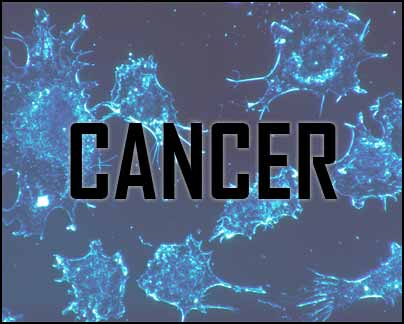- Home
- Editorial
- News
- Practice Guidelines
- Anesthesiology Guidelines
- Cancer Guidelines
- Cardiac Sciences Guidelines
- Critical Care Guidelines
- Dentistry Guidelines
- Dermatology Guidelines
- Diabetes and Endo Guidelines
- Diagnostics Guidelines
- ENT Guidelines
- Featured Practice Guidelines
- Gastroenterology Guidelines
- Geriatrics Guidelines
- Medicine Guidelines
- Nephrology Guidelines
- Neurosciences Guidelines
- Obs and Gynae Guidelines
- Ophthalmology Guidelines
- Orthopaedics Guidelines
- Paediatrics Guidelines
- Psychiatry Guidelines
- Pulmonology Guidelines
- Radiology Guidelines
- Surgery Guidelines
- Urology Guidelines
New, non-invasive method to wipe out cancerous tumors: study

Matthew Gdovin, an associate professor in the UTSA Department of Biology, has developed a newly patented method to kill cancer cells. His discovery, described in a new study in The Journal of Clinical Oncology, may tremendously help people with inoperable or hard-to-reach tumors, as well as young children stricken with cancer.
Gdovin’s top-tier research involves injecting a chemical compound, nitrobenzaldehyde, into the tumor and allowing it to diffuse into the tissue. He then aims a beam of light at the tissue, causing the cells to become very acidic inside and, essentially, commit suicide. Within two hours, Gdovin estimates up to 95 percent of the targeted cancer cells are dead.
“Even though there are many different types of cancers, the one thing they have in common is their susceptibility to this induced cell suicide,” he said.
Gdovin tested his method against triple negative breast cancer, one of the most aggressive types of cancer and one of the hardest to treat. The prognosis for triple negative breast cancer is usually very poor. After one treatment in the laboratory, he was able to stop the tumor from growing and double chances of survival in mice.
“All forms of cancer attempt to make cells acidic on the outside as a way to attract the attention of a blood vessel, which attempts to get rid of the acid,” he said. “Instead, the cancer latches onto the blood vessel and uses it to make the tumor larger and larger.”
Chemotherapy treatments target all cells in the body, and certain chemotherapeutics try to keep cancer cells acidic as a way to kill the cancer. This is what causes many cancer patients to lose their hair and become sickly. Gdovin’s method, however, is more precise and can target just the tumor.
In the past two years, he’s developed his photodynamic cancer therapy to the point where it’s non-invasive. It now requires just an injection of the nitrobenzaldehyde fluid followed by a flash of an ultraviolet light to cause the cancer-killing reaction. Gdovin has now begun to test the method on drug-resistant cancer cells to make his therapy as strong as possible. He’s also started to develop a nanoparticle that can be injected into the body to target metastasized cancer cells. The nanoparticle is activated with a wavelength of light that it can pass harmlessly through skin, flesh and bone and still activate the the cancer-killing nanoparticle.
Gdovin hopes that his non-invasive method will help cancer patients with tumors in areas that have proven problematic for surgeons, such as the brain stem, aorta or spine. It could also help people who have received the maximum amount of radiation treatment and can no longer cope with the scarring and pain that goes along with it, or children who are at risk of developing mutations from radiation as they grow older.
“There are so many types of cancer for which the prognosis is very poor,” he said. “We’re thinking outside the box and finding a way to do what for many people is simply impossible.”

Disclaimer: This site is primarily intended for healthcare professionals. Any content/information on this website does not replace the advice of medical and/or health professionals and should not be construed as medical/diagnostic advice/endorsement or prescription. Use of this site is subject to our terms of use, privacy policy, advertisement policy. © 2020 Minerva Medical Treatment Pvt Ltd